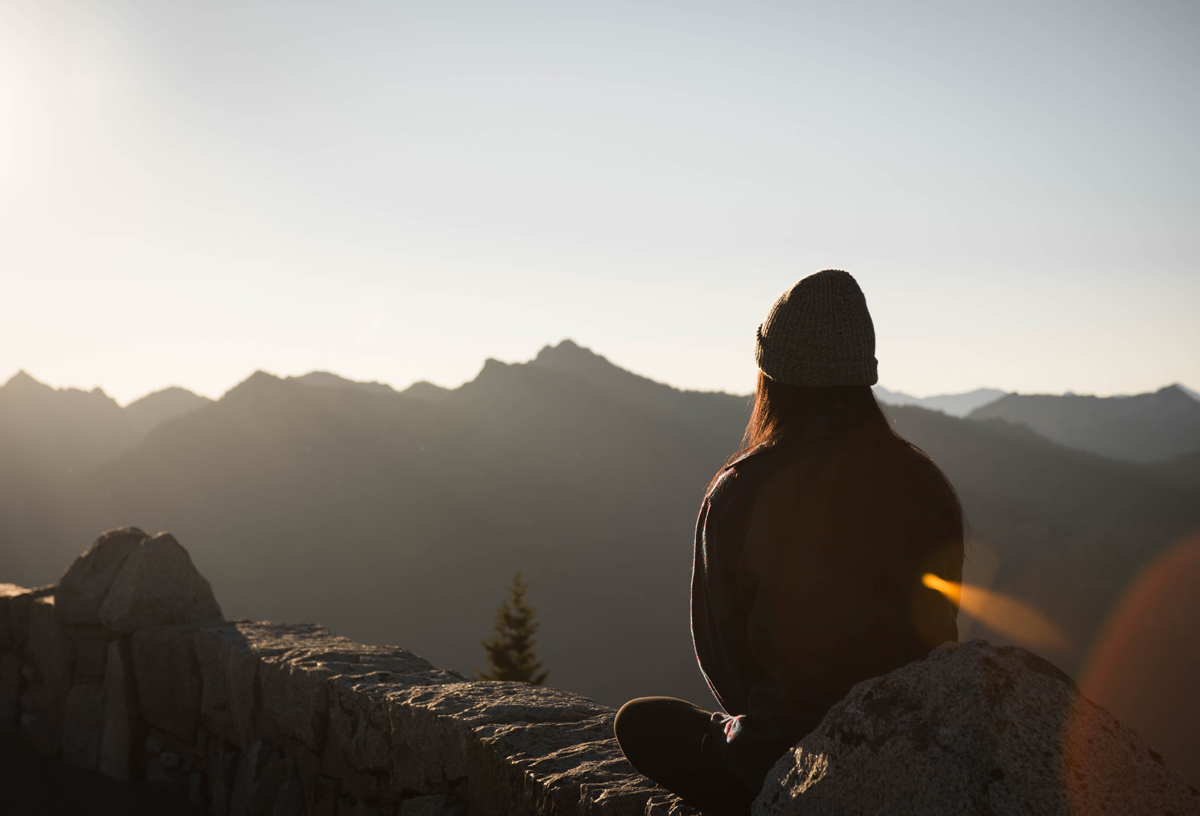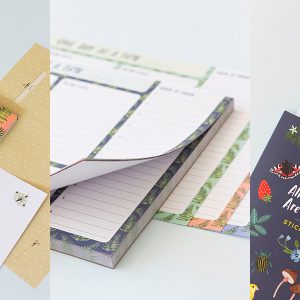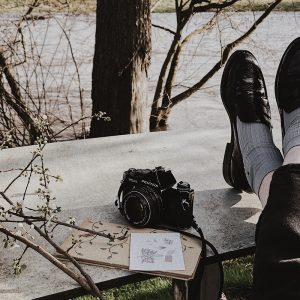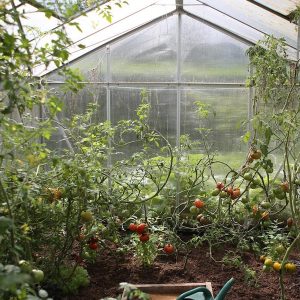You don’t have to go all floaty to give your mind a bit of peace. It can be done by taking a long walk, by cooking with focus or by meditation, for example. What is meditation and how can you apply it in your daily life? Here are some explanations and tips.
Meditating itself is not difficult, what is difficult is to gain the discipline for it at the start. But if you teach yourself to meditate regularly, you will find that it really calms your mind.
What is meditation?
Meditation is about (mental) silence. You allow your mind to fully relax and ultimately try to reach another state of consciousness by fully focusing on the here and now. There is no ‘one correct way’ to do it, it can be practiced in all kinds of ways. The important thing is that you try not to control your thoughts, but that you let them go. Many people think that you must clear your mind completely when you meditate, but that’s not the case. It is more about observing and accepting thoughts. You let them come as they are, you listen to them, and then you let them go again.
There are so many stimuli nowadays and so many things that distract us that we live less in the present than we might want. And that, according to Andy Puddicombe, founder of the meditation app Headspace, creates a stressed or anxious feeling. Meditation can help against this, because it has many positive effects: it reduces frustration, improves concentration, helps you to let go of angry feelings, reduces stress and teaches you to live in the moment more. It’s not surprising therefore that more and more people want to try it. Unfortunately, they think it is too complicated and that they won’t be able to do it. But it really isn’t that hard: when you learn to master the art of breathing, the step to meditation is not that big.
A good way to find out whether meditation is something for you is to start with five to ten minutes a day. If you want, you can gradually build it up to fifteen or twenty minutes – or more. But even a few minutes a day is enough to make you feel mindful and physically calmer. Whatever you do, though: be sure not to turn meditation into a task that causes you stress.
How can you meditate?
As mentioned, you can meditate in all sorts of ways. But there are a few basic things you can start with. First of all, your breathing. How often do you think about the way you breathe? Probably never. Meditation is all about conscious breathing. If you have mastered that, the rest will follow automatically.
Breathing exercises
Turn off all the media around you (including your telephone) and sit quietly on the couch or a chair. Preferably upright, with your feet on the floor and your hands in your lap. Close your eyes or let them rest on a point in front of you on the floor. Listen to your breathing. Follow the path of your breath as you inhale: where it enters your nose, as it travels through your throat, down your windpipe, and into your lungs. Feel how your chest and abdomen expand a little. As you breathe in, count from 1, to 2, to 3. Now, follow the path of your breath as you exhale, and feel your chest and abdomen drop again. During the exhalation, count from 3, to 2, to 1. Try to keep your mind on your breath and if it strays, simply bring your focus back to your breathing.
Meditate with apps
If you find it difficult to get started and you aren’t sure what you’re supposed to be doing when, you can also enlist the help of an app to guide you through your meditation. There are plenty available – these four are our favorites:
- Headspace
With this app, the focus is on meditation: every day, there’s a new session. You can choose how long you want to meditate for, starting with three minutes. If you want to get a little more serious about your meditation practice, you can take out a subscription that gives you access to all the meditation exercises. Downloadable via the App Store and Google Play.
- Calm
With Calm you can, for example, do breathing exercises or learn to meditate in one week. If you want access to more exercises, you can expand the app with a subscription. Downloadable via the App Store and Google Play.
- Stop, Breath and Think
When you open this app, you can submit how you feel at that moment in time. On the basis of that you will be guided by a meditation. You also get a quick meditation course for beginners and you learn more about mindfulness. Downloadable via the App Store and Google Play.
- 7Mind
In this app, you start with a short basic course of seven minutes, after which you can take a subscription for a month, year or even your entire life. This gives you access to all meditation sessions, with themes such as a happy relationship, gratitude and creativity. Downloadable via the App Store and Google Play.
Applied meditation
Coloring, walking, gardening: there are many different forms of applied meditation. If you try something out, you will often find a method that suits you. You can do it by fully focusing your attention on the activity and your breathing. You can also meditate between different activities: every time you walk to work or the supermarket, breathe in the air, look at the trees and try to feel very conscious. Or close your eyes and focus on the air going in and out as you breathe.
You can also try eating meditation. Lay the table with a tablecloth and crockery. Feel the bread, smell the milk or the fragrant tea or even the tomatoes. Be aware of the food and think about it, without losing yourself in all kinds of thoughts that have nothing to do with it. Take a bite and chew consciously, swallow consciously. Feel how the food is transported through your esophagus to your stomach. Wait a moment as you let the experience sink in. Breathe in and out gently. Then take the next bite. You may find that you taste much more if you eat with attention.
Retreats
Relaxing and seeing things again in perspective often works just a little better in a different place than at home. Therefore, to learn to meditate undisturbed, you can also go on a retreat. And you’re bound to find plenty of lovely places both at home or abroad where you can withdraw completely.
Nathalie, who went on a silent retreat (and wrote about it in our Dutch Holiday Special 2017), found it an invaluable experience. ‘As the week progresses, I find more peace of mind,’ she writes. ‘I keep getting better and better at seeing my thoughts from a distance. They are still there, but I no longer identify with them. I realize: I have thoughts, but I am not my thoughts. All kinds of feelings come along, but I am not those either. Insights such as these are so valuable.’
Read and watch
To learn more about silence and its value, you can of course delve into it more. Countless books have been written about silence and a simpler life. There are also films about silence, such as the documentary Walk with me, which follows Buddhist teacher and Zen master Thich Nhat Hanh in his monastic community, Plum Village in southern France. It’s fascinating to see in the documentary how the monks and nuns integrate mindfulness into their lives and sometimes struggle with the same life questions as we do.
- Want to know more about Mindfulness? Take a look at our special 19 Days of Mindfulness.
Translation Julia Gorodecky Photography Daniel Mingook Kim/Unsplash.com (opening image), Joanna Nix/Unsplash.com
Find all our current promotions, discount codes and sale here














